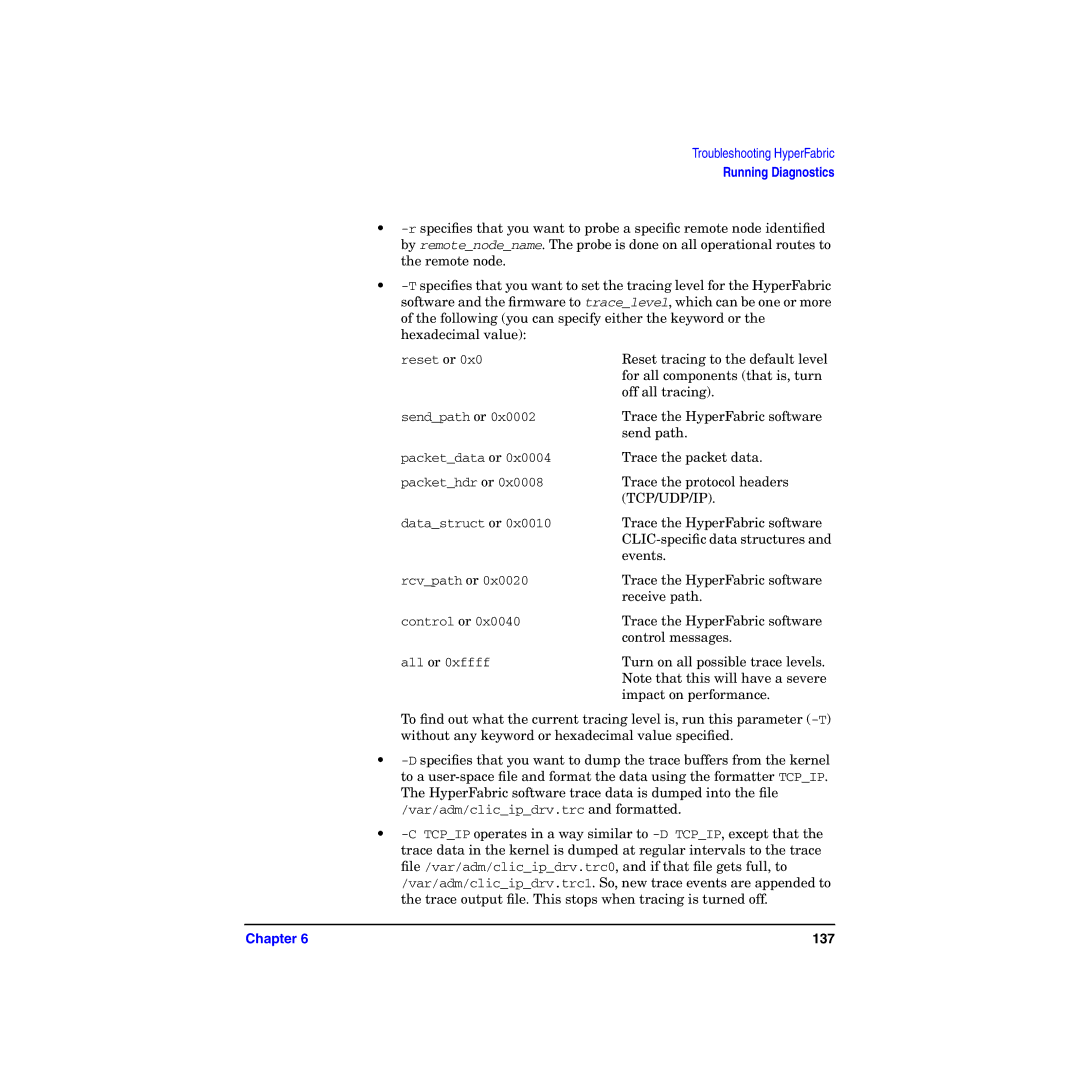
Troubleshooting HyperFabric
Running Diagnostics
•-rspecifies that you want to probe a specific remote node identified by remote_node_name. The probe is done on all operational routes to the remote node.
•-Tspecifies that you want to set the tracing level for the HyperFabric software and the firmware to trace_level, which can be one or more of the following (you can specify either the keyword or the hexadecimal value):
reset or 0x0 | Reset tracing to the default level |
| for all components (that is, turn |
| off all tracing). |
send_path or 0x0002 | Trace the HyperFabric software |
| send path. |
packet_data or 0x0004 | Trace the packet data. |
packet_hdr or 0x0008 | Trace the protocol headers |
| (TCP/UDP/IP). |
data_struct or 0x0010 | Trace the HyperFabric software |
| CLIC-specific data structures and |
| events. |
rcv_path or 0x0020 | Trace the HyperFabric software |
| receive path. |
control or 0x0040 | Trace the HyperFabric software |
| control messages. |
all or 0xffff | Turn on all possible trace levels. |
| Note that this will have a severe |
| impact on performance. |
To find out what the current tracing level is, run this parameter (-T) without any keyword or hexadecimal value specified.
•-Dspecifies that you want to dump the trace buffers from the kernel to a user-space file and format the data using the formatter TCP_IP. The HyperFabric software trace data is dumped into the file
/var/adm/clic_ip_drv.trc and formatted.
•-C TCP_IP operates in a way similar to -D TCP_IP, except that the trace data in the kernel is dumped at regular intervals to the trace file /var/adm/clic_ip_drv.trc0, and if that file gets full, to /var/adm/clic_ip_drv.trc1. So, new trace events are appended to the trace output file. This stops when tracing is turned off.
